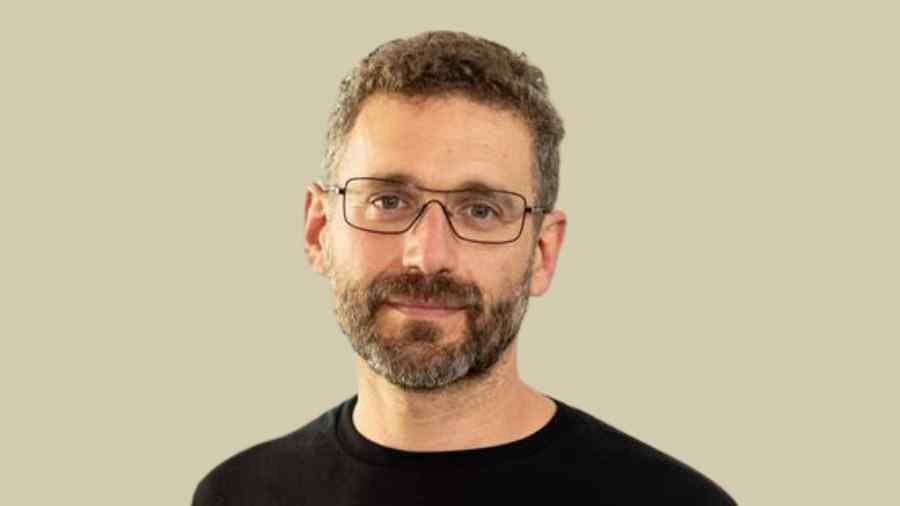Ilan Gur: The Visionary Leader Redefining the Future of Scientific Innovation

Ilan Gur is one of the most influential figures in modern scientific entrepreneurship and innovation policy. His journey from a materials scientist to the Chief Executive Officer of the United Kingdom’s Advanced Research and Invention Agency (ARIA) represents a powerful evolution in how science and technology can reshape the world when driven by a clear purpose. Gur has become a symbol of what happens when cutting-edge research meets visionary leadership — a blend of academic brilliance, entrepreneurial courage, and a passion for societal impact.
Born with a strong curiosity for understanding how things work at the molecular level, Ilan Gur has devoted his life to closing the gap between scientific discovery and real-world innovation. In an age where many technological breakthroughs remain trapped in laboratories, he has pioneered new models to bridge that divide, empowering scientists and engineers to bring their boldest ideas to life. His work through initiatives like Cyclotron Road, Activate, and ARIA has transformed the way the world thinks about scientific risk-taking and technological progress.
Early Life and Academic Journey
Ilan Gur’s academic foundation lies in materials science and engineering, a discipline that underpins some of the most transformative technologies of our time — from renewable energy to electronics. He pursued his undergraduate, master’s, and doctoral degrees at the University of California, Berkeley, one of the world’s leading institutions for scientific research and innovation. During his time at Berkeley, Gur explored advanced materials for energy storage and solar applications, focusing on how scientific innovation could translate into scalable, real-world solutions.
While completing his PhD, Gur began to recognise that many scientific discoveries never leave the laboratory. This realisation would later define his mission — to build systems and pathways that could carry science out of research papers and into production lines. He saw that the existing innovation ecosystem lacked the structures needed to transform deep scientific work into commercial impact. His academic years provided him not just with technical expertise but also with a deep understanding of how fragmented the journey from discovery to deployment truly was.
From Scientist to Entrepreneur
After completing his studies, Ilan Gur took a bold step into entrepreneurship, co-founding Seeo, Inc., a lithium-based battery startup. The company was built around a solid-state battery technology that promised safer and more efficient energy storage — a critical component in the transition to renewable energy. Seeo’s success caught the attention of major industry players, and it was eventually acquired by Bosch, one of the world’s largest engineering and technology companies.
This early venture was a defining moment in Gur’s career. It validated his belief that scientists should not remain confined to academic spaces. Instead, they should actively participate in shaping the future through entrepreneurship and practical innovation. By combining scientific depth with entrepreneurial vision, Gur proved that it was possible to turn complex research into market-ready technology.
Bridging Science and Market: The ARPA-E Chapter
Ilan Gur’s experience with Seeo eventually led him to a leadership role in the U.S. Department of Energy’s Advanced Research Projects Agency–Energy (ARPA-E). This agency, inspired by the American defence innovation model DARPA, funds high-risk, high-reward energy projects that have the potential to transform the sector.
At ARPA-E, Gur worked as a programme director and senior advisor, helping to identify and support breakthrough technologies in clean energy and advanced materials. He developed a deeper appreciation for the power of mission-driven innovation — the idea that strategic risk-taking in research can accelerate national progress. During his tenure, he gained a first-hand understanding of how government-funded science could drive private-sector transformation when executed with focus and agility.
This period was also pivotal in shaping Gur’s leadership philosophy. He saw that innovation could not be micromanaged through rigid bureaucracies. Instead, it needed freedom, trust, and flexibility — conditions that he would later build into ARIA’s structure.
Founding Cyclotron Road and Activate
One of Ilan Gur’s most remarkable contributions to science and innovation is the creation of Cyclotron Road in 2014, based at the Lawrence Berkeley National Laboratory. This programme was designed to support entrepreneurial scientists working on technologies that are too early for venture capital but too applied for traditional academic grants.
Cyclotron Road’s success quickly inspired the establishment of Activate, a non-profit organisation that expanded the model across the United States. The programme provides two years of support to scientists and engineers, offering them funding, mentorship, laboratory access, and business development training. This innovative model created a bridge between academic discovery and entrepreneurial execution.
Through Activate, Ilan Gur helped dozens of scientists transform their ideas into startups. Many of these ventures have since gone on to secure major funding, create jobs, and contribute to solving global challenges in energy, sustainability, and materials science. The programme also helped redefine how the world views “research entrepreneurship,” turning it from a niche concept into a scalable model of innovation.
The Birth of ARIA: A New Chapter in the UK
In 2022, Ilan Gur was appointed the founding Chief Executive Officer of the United Kingdom’s Advanced Research and Invention Agency (ARIA). This organisation was conceived to bring a new spirit of innovation to British science — modelled in part on ARPA-E and DARPA, but adapted to the UK’s unique research landscape.
ARIA’s mission is to fund groundbreaking projects that could transform industries, society, and the economy. Unlike traditional funding bodies, it is designed to operate independently from government bureaucracy, allowing it to move fast, take bold bets, and tolerate failure in pursuit of major breakthroughs. Gur’s leadership at ARIA represents the culmination of his career’s philosophy: that science must be free to take risks if it is to create real impact.
Under his guidance, ARIA is expected to fund projects in fields such as advanced materials, artificial intelligence, biotechnology, and energy systems — all with the potential to redefine the future. Ilan Gur’s appointment was seen as a major milestone for the UK, signalling a commitment to innovation that prioritises creativity, experimentation, and bold thinking.
Vision and Philosophy
At the core of Ilan Gur’s philosophy is a belief that science must serve humanity by addressing its biggest challenges — from climate change to sustainable energy and resource scarcity. But he also believes that the way we organise science is as important as the discoveries themselves.
He argues that many of the world’s greatest innovations come from environments where scientists are free to take unconventional paths. By giving talented individuals the freedom, tools, and confidence to take risks, we create the conditions for real breakthroughs. This philosophy is evident in both Activate’s fellowship model and ARIA’s flexible structure.
Gur often emphasises that the most transformative technologies start as ideas that sound impossible. His approach rejects the notion that innovation must always follow predictable paths or established metrics. Instead, he champions a mindset of exploration, diversity of thought, and long-term thinking.
Impact on Global Innovation
Ilan Gur’s influence extends far beyond the organisations he has built. His ideas have inspired a generation of scientists and policymakers to rethink how innovation should be structured. By demonstrating that it is possible to combine the rigour of science with the dynamism of entrepreneurship, he has created a blueprint for 21st-century innovation.
His work also highlights the importance of cross-border collaboration. By leading ARIA in the UK after building his career in the United States, Gur represents a bridge between two of the world’s most dynamic innovation ecosystems. His transatlantic perspective allows him to integrate the best practices of both regions while avoiding the pitfalls of traditional bureaucracy.
In doing so, he has positioned himself as a global thought leader in what some call “metascience” — the science of how science itself should be done. This focus on innovation systems rather than just technologies marks a profound shift in how the world approaches research funding and technological development.
Lessons for Entrepreneurs and Scientists
There are several valuable lessons that aspiring entrepreneurs and scientists can learn from Ilan Gur’s journey:
Embrace risk and uncertainty. Breakthroughs often come from projects that others consider too ambitious or impractical.
Bridge the gap between science and the market. Understanding the commercial potential of your research is as vital as the science itself.
Build networks of support. Innovation thrives in communities that share ideas, resources, and mentorship.
Challenge conventional structures. Gur’s success stems from his ability to rethink institutions and create new ones that better serve innovation.
Stay mission-driven. The most successful innovations are those guided by purpose — solving real problems that affect people and the planet.
Legacy and Future Outlook
Ilan Gur’s work continues to evolve, but his legacy is already evident in the thousands of scientists, entrepreneurs, and policymakers influenced by his vision. Through ARIA, he is helping to build an environment where innovation can flourish free from excessive control and short-term pressures.
As the world faces mounting challenges — from energy transition to artificial intelligence ethics — leaders like Gur are redefining what it means to innovate responsibly. His model shows that transformative progress depends not just on funding, but on freedom, courage, and belief in human creativity.
Conclusion
Ilan Gur stands at the frontier of science and entrepreneurship, embodying the modern spirit of innovation that dares to challenge limits. From founding breakthrough startups to shaping national science policy, his career is a testament to what happens when intellect meets purpose. He has proven that innovation is not merely about invention; it is about reimagining systems so that ideas can move from the lab to the lives of people everywhere.
As the leader of ARIA, Ilan Gur continues to inspire a new generation of innovators to take bold steps toward building a better, more sustainable future. His story reminds us that true innovation does not come from following trends but from creating them — through vision, courage, and relentless belief in the power of science to change the world.



